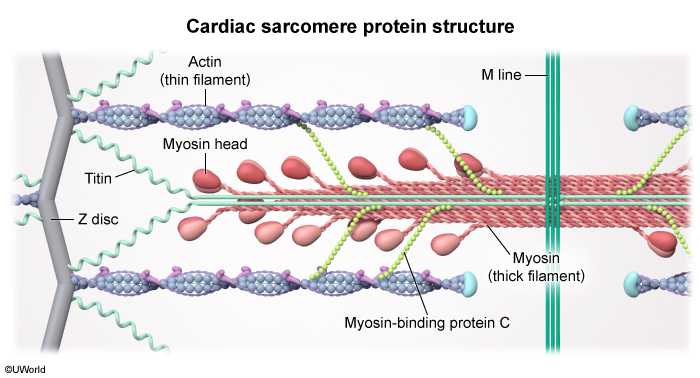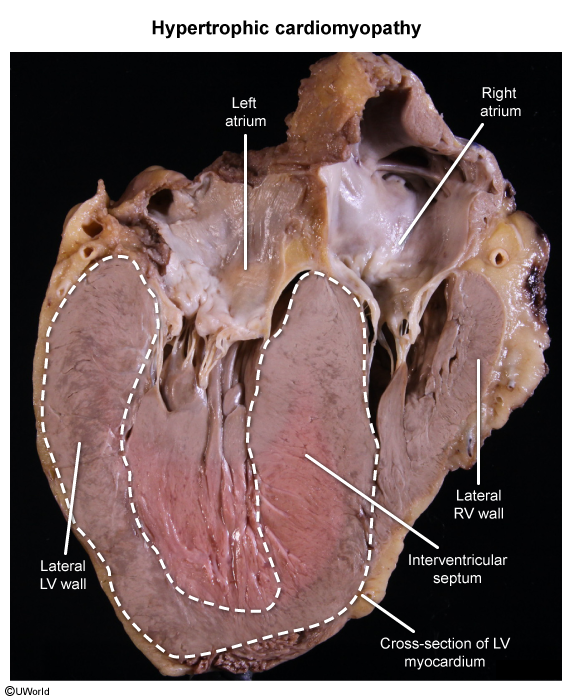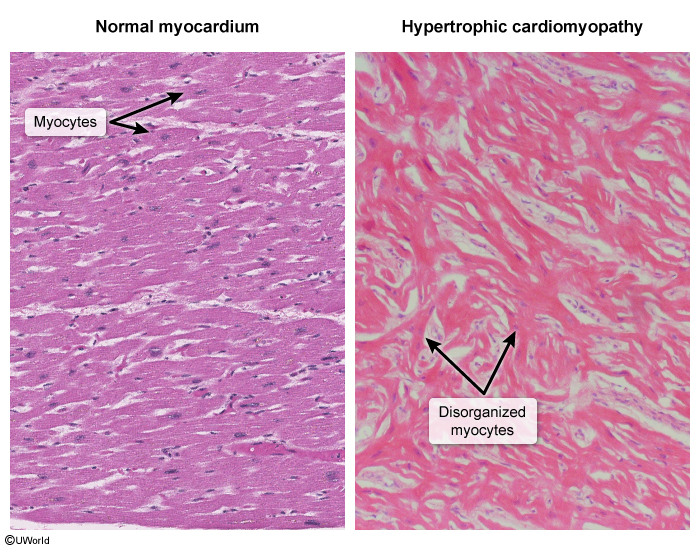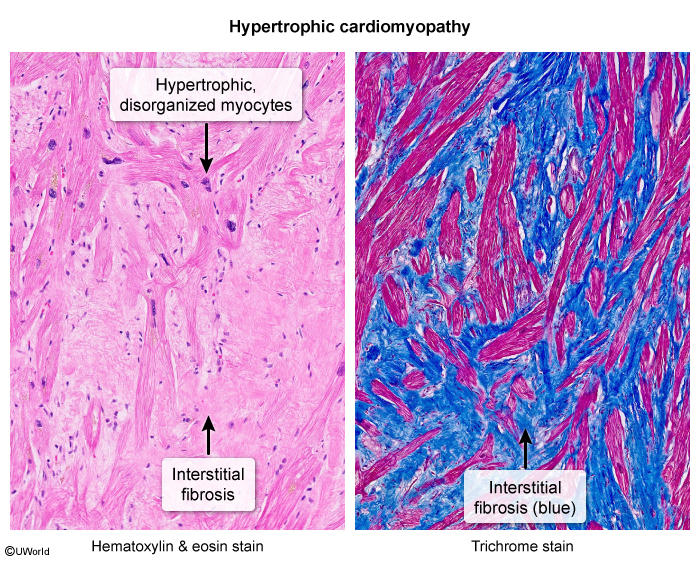Hypertrophic Cardiomyopathy
Article Sections
Introduction
Hypertrophic cardiomyopathy (HCM) is a common inherited cardiomyopathy. Phenotypic manifestations usually begin to develop around adolescence and primarily involve varying degrees of left ventricular (LV) hypertrophy that often predominantly affect the interventricular septum.
Pathophysiology
HCM is typically inherited in an autosomal dominant fashion, with roughly half of cases resulting from a mutation in genes encoding for myocardial contractile proteins (eg, cardiac myosin-binding protein C, cardiac beta-myosin heavy chain) of the cardiac sarcomere (Figure 1). Many affected patients have a recognizable family history of HCM; however, some do not because sporadic mutations can occur and phenotypic penetrance is not complete (ie, family members with a mutation do not always demonstrate phenotypically).
With age, contractile protein abnormalities can begin to disrupt myocardial structure and function, and by adolescence, the phenotypic manifestations of HCM and their associated consequences usually develop:
Continue Learning with UWorld
Get the full Hypertrophic Cardiomyopathy article plus rich visuals, real-world cases, and in-depth insights from medical experts, all available through the UWorld Medical Library.
Figures

Images


